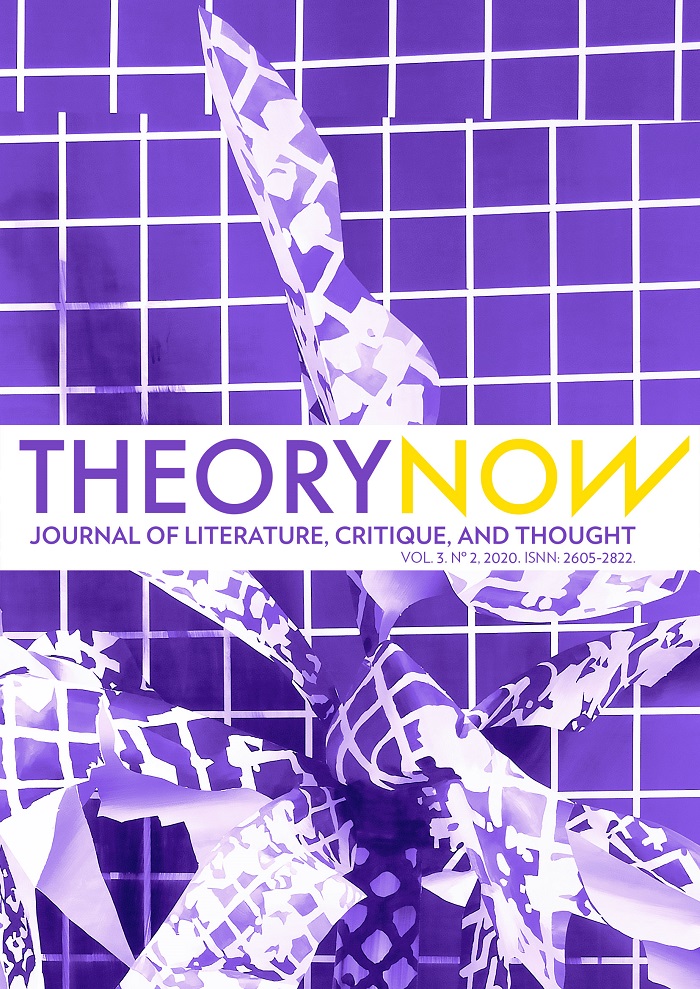On the footsteps of Soulèvement
DOI:
https://doi.org/10.30827/tnj.v3i2.13935Keywords:
uprisings, Georges Didi-Huberman, montage, fable of temporalities, gestualities, indestructibility of desire, dialecticsAbstract
In this article, I attempt to think, on the one hand, Georges Didi-Huberman’s task as art historian and image thinker, together with, on the other hand, his supplementary activity as an exhibition curator in light of his most recent exhibition: Soulèvements. This project consists of an apparatus built around the phenomenon of social resistance and popular uprising, produced mainly by the Jeu de Paume Gallery in Paris. For this purpose, I explore that which the author, in his texts, demands of all the practices that aim to "make sensible" the upheavals experienced by human beings, in order to see how he translates these points in successive montages. I then analyse the political consequences of the migratory character of the project and the conditions of its opening. Furthermore, the article reconstructs the anthropological fable on which the itinerary of the exhibition is built and considers the particular way Didi-Huberman sheds light on the complex temporality of uprising.Downloads
References
Burgos, José Miguel. “El bailaor de soledades” (Reseña). La Torre del Virrey/libros. Cuarta serie, Valencia, 2009, pp. 151 y 152.
Cabello, Gabriel. “Imágenes de la rebelión: arte y poesía en la historia de los levantamientos”. El Confidencial, 20 de diciembre de 2016 (edición digital).
Cerezo, Matías. “Cuando las imágenes nos sublevan. Entrevista con Georges Didi-Huberman”, Revista Haroldo, Buenos Aires, Centro Cultural de la Memoria Haroldo Conti, 2017 (edición digital).
Didi-Huberman, L’homme qui marchait dans la couleur. París, Les Éditions de Minuit, 2001.
Didi-Huberman, Georges. La imagen mariposa. Barcelona, Mudito & Co, 2007.
Didi-Huberman, Georges. Ante el tiempo. Historia del arte y anacronismo de las imágenes. Buenos Aires: Adriana Hidalgo Editora, 2008.
Didi-Huberman, Georges. Survivance des lucioles. París. Les Éditions de Minuit, 2009.
Didi-Huberman, Georges. “La exposición como máquina de guerra. Keywords”. Revista Minerva no. 16, IV Época, Círculo de Bellas Artes, 2011 (edición digital).
Didi-Huberman, Georges. L’oeil de l’histoire 4. Peuples exposés, peuples figurants. París, Les Éditions de Minuit, 2012.
Didi-Huberman, Georges. “Hacer sensible”, en Badiou, Bourdieu, Butler, Didi-Huberman, Khiari y Rancière ¿Qué es el pueblo? Madrid, Casus-Belli, 2014.
Didi-Huberman, Georges. “Leer, una y otra vez, lo que nunca ha estado escrito”. Lesmes, Cabello y Massó (coords.) Georges Didi-Huberman. Imágenes, historia, pensamiento. Madrid, Anthropos, 2017a.
Didi-Huberman, Georges. Insurrecciones. Catálogo, Barcelona, MNAC, 2017b.
Didi-Huberman, Georges. Sublevaciones. Catálogo, México D.F. | París, MUAC-UNAM | Jeu de Paume, 2018a.
Didi-Huberman, Georges. Le soulèvement infini. Catálogo, Montréal, Gallérie de l’UQAM, 2018b.
Merleau-Ponty, Maurice (1945). “Le roman de la métaphysique”, Sens et non-sens. París, Gallimard, 1996.
Romero, Pedro G. “Un conocimiento por el montaje. Entrevista con Georges Didi-Huberman”. Revista Minerva nº 5, IV Época, Círculo de Bellas Artes, 2007 (edición digital).
Downloads
Published
How to Cite
Issue
Section
License
Theory Now. Journal of Literature, Critique, and Thought is an immediate open-access publication which is available at no cost for readers and authors alike. Authors are not charged any kind of fee for the editorial processing of their articles. Reading, downloading, copying, distributing, printing, searching, linking or reusing all published articles for non-commercial uses is allowed on the condition of citing the author, the journal and the editing body. All intellectual material published in this journal is protected under a Creative Commons Attribution-NonCommercial 3.0 Spain license.
Dissemination of the articles in social (Facebook, Twitter, Linkedin, etc.) and scientific networks (ResearchGate, Academia.edu, etc.), public repositories at universities and other institutions, blogs, personal or institutional websites, Google Scholar, ORCID, ResearchID, ScopusID, etc. is strongly encouraged. In all cases, the intellectual property of the articles and any possible monetary profits derived from them belong exclusively to the authors.













